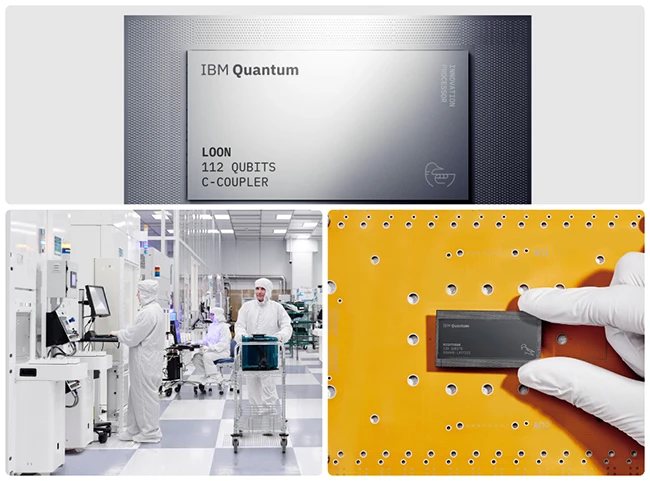IBM pushes toward quantum advantage by 2026 with new Nighthawk processor
IBM is taking another major step toward its goal of achieving quantum advantage by 2026 and fault-tolerant quantum computing by 2029, unveiling its most advanced quantum processor yet, IBM Quantum Nighthawk.

IBM Quantum Nighthawk processor
The new processor, revealed today, is built on a redesigned architecture meant to pair with high-performance quantum software. IBM says this combination could enable Nighthawk to deliver quantum advantage as soon as next year, the point when a quantum computer can outperform every classical-only method on a specific problem.
Expected to reach IBM users by the end of 2025, Nighthawk packs 120 qubits linked by 218 next-generation tunable couplers arranged in a square lattice, offering more than 20% greater connectivity than the company’s previous Heron processor. That extra interconnection, IBM says, allows users to execute circuits with 30% greater complexity while keeping error rates low.
The architecture is designed to handle workloads of up to 5,000 two-qubit gates, a critical measure of quantum computational capacity. Future iterations are projected to hit 7,500 gates by 2026, 10,000 by 2027, and as many as 15,000 two-qubit gates by 2028, when IBM expects systems could scale to 1,000 or more interconnected qubits using long-range couplers first tested last year.
“There are many pillars to bringing truly useful quantum computing to the world,” said Jay Gambetta, Director of IBM Research and IBM Fellow. “We believe that IBM is the only company that is positioned to rapidly invent and scale quantum software, hardware, fabrication, and error correction to unlock transformative applications. We are thrilled to announce many of these milestones today.”
Community validation on the road to advantage
IBM expects the first verified cases of quantum advantage to be confirmed by the broader research community by the end of 2026. To help track and validate those claims, IBM has joined forces with Algorithmiq, the Flatiron Institute, and BlueQubit to launch an open, community-led quantum advantage tracker.
The tracker currently hosts three experiments covering observable estimation, variational problems, and classically verifiable challenges, and invites contributions from researchers across the quantum and classical computing worlds. IBM says it hopes the initiative will encourage rigorous benchmarking and healthy competition between classical and quantum approaches.
“I’m proud that our team at Algorithmiq is leading one of the three projects in the new quantum advantage tracker. The model we designed explores regimes so complex that it challenges all state-of-the-art classical methods tested so far,” said Sabrina Maniscalco, CEO, Algorithmiq. “We are seeing promising experimental results, and independent simulations from researchers at the Flatiron Institute validate its classical hardness. These are only the first steps – quantum advantage will take time to verify, and the tracker will let everyone follow that journey.”